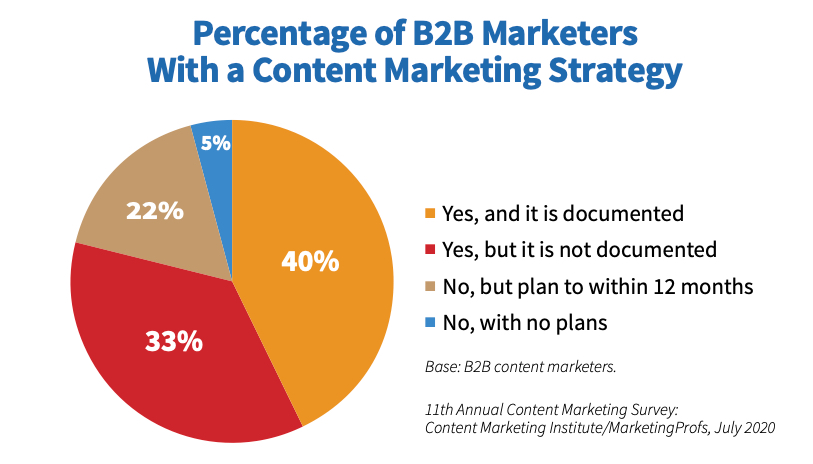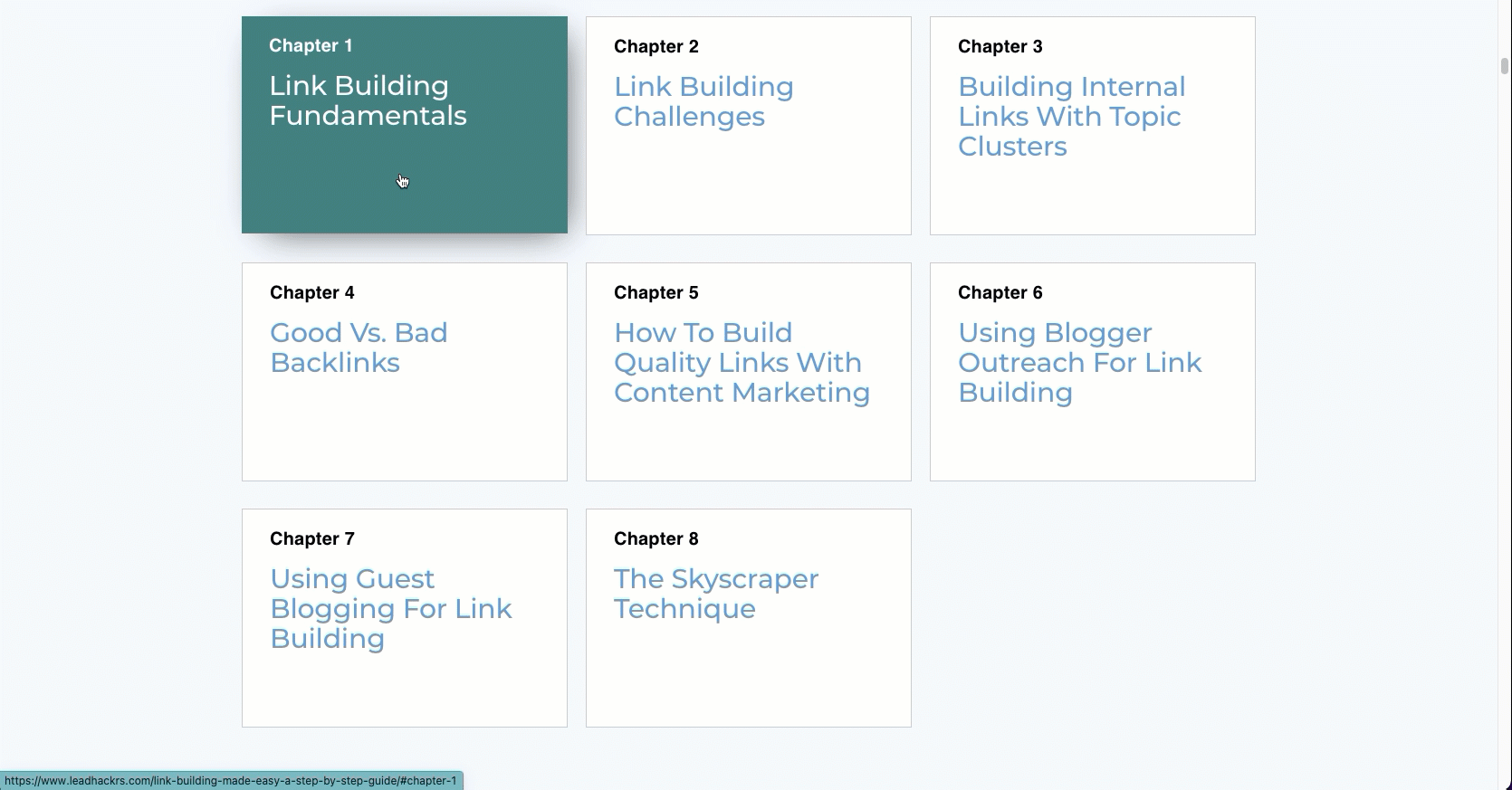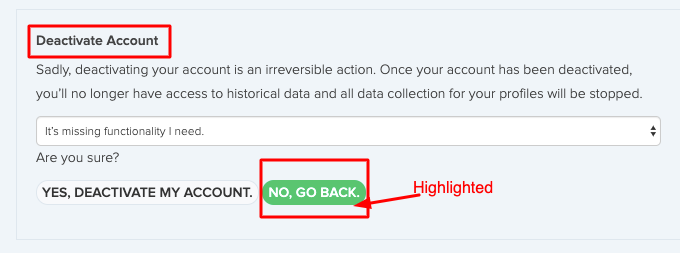
Content creation, in itself, isn’t difficult.
According to a study published by TechJury, over 5 million blog posts were published on WordPress sites alone in Q1 of 2021. Factor in videos, graphics, and other types of content you find on the internet, and the number exponentially explodes.
The challenge marketers face is creating content that’ll capture their target market’s attention and get them to convert into paying customers.
The reason?
Content marketing is constantly evolving. Trends, new technologies, and changes in consumer behaviors can affect the overall success of your content marketing strategy.
If you want to stay one step ahead of the competition, you need to keep yourself updated with these changes.
In this article, I’ll be sharing the top 15 content creation trends you’ll need to prepare for in 2022 to improve the overall success of your content marketing strategy.
Are you ready? Then let’s begin.
1. Growing Importance of Customer User Experience
Table of Contents
Customer user experience is more than just having a responsive and easy-to-navigate website. It pertains to the overall interaction your customers have with your brand and your product.
To have a successful content marketing strategy in 2022, you need to create content that provides them with the information and resources they need based on your marketing funnel.
One way of ensuring you include your customer user experience in your content creation is to update your buyer persona and customer journey.
That’s because events like the COVID-19 pandemic have significantly changed their current pain points and goals. These events may have also altered how they search for information and their priorities, influencing their buying decisions.
Another is to do an audit of your brand’s online reputation.
Check online reviews and social media posts to see whether you and your customers share the same sentiment about your brand and products. If there are any discrepancies, you can create content to address these adequately.
2. Emphasis on Customer Retention
Most businesses focus their content creation efforts on customer acquisition.
Not surprising since one of the key benefits of content marketing is that it helps promote your brand and builds trust with your target market. This is vital because customers will only buy from businesses they trust.
Customer acquisition is still going to be essential in 2022. However, this is going to be superseded by customer retention.
Much of this has to do with maximizing your business’ marketing budget and your bottom line.
You see, repeat customers are 60-70% more likely to purchase and buy 31% more than first-time customers.
More importantly, marketing to a repeat customer costs up to 25 times cheaper than marketing to brand new customers.
Onboarding guides and user-generated content highlighting your existing customer’s experiences with your products are examples of content you can create for this.
3. The Rise of Visual Storytelling
Statistics say that the brain processes images 60 thousand times faster than any text. Therefore, if a brand gives good storytelling in a visual format, there is much more chance that the target of this message will engage. Video is the most potent format of visual storytelling.
Videos have never been more vital than they are today. With the demand of being visual content, they can catch the audience’s attention and engage. According to Fierce Video, by 2022, the video will be 82% of all internet traffic.
Here are the two most popular metrics for the video that you can create, the long-form videos and the short-form videos. And the platform that suited each of them.
YouTube has always been the origin of entertaining content and one of the best tools to use when doing long-form videos. According to Social Media Examiner’s 2020 industry report, YouTube is used by 55% of marketers.
And for short-form videos, TikTok and Instagram Reels is the best choice for you. While YouTube still reigns supreme in video marketing in terms of numbers of users and searches, Tiktok and IG Reels are dominant when it comes to short-form video marketing.
TikTok usage continues to grow, and the TikTok app is a dominant force in the social media world. Meanwhile, IG Reels allows you to benefit from your existing Instagram followers.
One tool you can use for creating high-quality and engaging videos is Movavi Video Editor Plus.
It provides you with incredible built-in features so it takes no more than 20 minutes to create a high-quality video to publish on your website and social media channels.
Canva is another great tool to use for creating video content. In addition to having a vast library of stock videos, it also provides video templates you can quickly create professional-looking videos for your ad campaigns.
4. Increased Use of AI by Small Businesses
Content marketing has become vital for every small business, but it still takes time and resources. AI can help with this problem by assisting you in your business growth by making the method more efficient and productive.
It helps collect customer information for personalization, but it can also use that data to generate targeted content to send to customers. From captions to reports, AI-powered tools can support you to develop that.
GPT-3 by the OpenAI Company, an AI tool, has been known to generate decent-quality content. It sources data and sources all over the internet, which it then uses to create content.
Chatbots are also AI-powered, and they are getting smarter every single day. Businesses use chatbots to deliver information quickly, thus adding more support to your content marketing strategy.
5. Resurrection of Podcasts
Podcasts have become amazingly popular in the past several years. According to Podcast Insights, there are currently more than a million podcasts, with 48 million episodes between them, and more than half of all families are podcast listeners. Podcasts still seem to be on a fast growth trajectory, as more people find and become interested in the medium.
Content marketers can share their stories with the correct podcasting approach. Podcasts also work well with social media and can complement blog content for customers who prefer audio. Podcasts, unlike text content, have a human perception. Several qualities of the voice, such as tone and emotion, can be related to the audience.
6. Hyper-Personalization is Key
As the technologies are improving, people are getting more fussy and demanding. If marketers are not giving the exact things they are asking, you are not worthy of them.
Hyper-personalization is the more advanced next step of personalized marketing that helps you deliver more relevant content and service information to each user.
Sources say that 86% of marketing professionals believe that implementing an AI-powered hyper-personalization approach has driven better results.
For this, it is also essential to understand what keeps your customers happy. Many brands like Spotify, Amazon, and Starbucks use hyper-personalization approaches to attract and engage their viewers.
It lessens the effort required by customers to get what they are looking for by removing any barriers in the sales funnel, which leads to an uncluttered and smooth shopping experience.
7. Written Content Still Has Its Place
Having high-quality backlinks are one of the critical factors Google considers when ranking websites on their SERPs. And it is essential for boosting your site’s SEO and creating brand awareness for your site.
A well-written content on your site is the best way to get relevant websites to link to yours. Like,
Long-form blog posts.
Covers a variety of topics are likely to outrank competitors, even against higher DR sites. Why? From a customer experience, this type of post provides a one-stop source, and encourages visitors to stay on your page longer, reducing bounce rates.
Articles
It is the part of your site that you will most frequently update with new posts and information to keep readers engaged. Create a data-driven content calendar to maximize the success of your blogs.
Pillar pages
It’s a high-level piece of content that broadly overviews a core topic and links out to in-depth articles about specific subtopics.
Websites like Jooble offer several content creator jobs you can apply to kickstart your content creation journey or help you find a talented content creator to ensure your business capitalizes on this trend.
8. Documentation is a MUST!
As a content marketing leader, you want to ensure that your content marketing team has every tool and resource they need for success.
Whether you’re onboarding new team members or managing a former team of pros, it’s essential to provide the support everyone needs to do their work well.
According to the recent report published by the Content Marketing Institute, 77% of businesses have a documented content marketing strategy, with 29% of them saying that these were successful.

When processes are documented and followed, it builds a better experience for the internal team and clients.
This is especially important now that we’re all working remotely. Miscommunications and small mistakes are all too prevalent. It also promotes productivity and streamlines efforts.
9. Prioritize Data Analysis from Data Collection
Collecting data enables you to store and analyze critical information about your current and potential customers.
Once data is collected, it’s analyzed to gain valuable trends and insight. You can use these data to build segmented viewers’ profiles for future content marketing efforts, making your marketing spend more productive and efficient.
From this perspective, every strategic decision about content planning, creation, and improvement is based on the market’s knowledge that data can generate.
This way, you have a higher chance of generating content that sparks interest and achieves the company’s Content Marketing goals.
10. Privacy Policies are Becoming More Stringent
Data privacy plays a vital role in lead generation, and failing to understand this role can end up having much more critical consequences than you think.
The first action you will need to do is understand the data protection laws in your country and how they will affect your campaigns.
Once you understand your country’s data privacy laws, you will need to have a clear privacy policy in place along with various other agreement measures.
The privacy policies presented on your website should outline exactly how you manage, collect, and protect data, as per your country’s regulations set forth by data protection acts.
In addition, your business needs to have cookie notices (ideally as a pop-up to make them easy to see) that allow guests to choose which cookies they feel comfortable being used and saved. Then, you will need to ensure that your permissions and opt-in communication is also apparent.
Privacy policies are more than a big deal. It’s everything. Customers are increasingly looking for transparent businesses, and 75% of people in the US say they are not okay with companies using their data.
In fact, 72% of people support a national privacy protection law.
Protecting user data is not only the right thing to do, but it is also quickly becoming a differentiator amongst businesses. Also, they appear to be still thriving despite the stringent law.
Indeed, respecting privacy, and promoting reasonable legislation, might be the very key to success.
11. Create Content for Shopping, Not Just Informing
Shoppable content offers a valuable way to find and shop for products, a strong business strategy. Over 25% of consumers now begin product searches on social media, so the ability to shop directly from there matters.
When creating content for shopping, you should provide relevant and valuable content to your customers. They are more inclined to engage with your content if it allows for educational information.
You can also take in on social media trends like memes and viral content to increase your engagement and reach depending on your brand persona.
12. (Organic) Social Media is Dead
If you’ve been managing social media accounts over the past few years, you’ve likely noticed a drop in your viewers and interaction with the organic posts you publish to that page.
For instance, organic reach on Facebook is now just 5.2%, which means roughly one in every 20 followers sees your page’s non-promoted content.
As organic reach continues to decline across social platforms, it’s increasingly important to invest in paid social opportunities to reach a broader audience.
Sure, paid social media costs money. But that doesn’t make it less cost-effective than organic social.
Paid social is an excellent way to increase brand awareness. The more often you appear in a user’s newsfeed, the more probable they will remember your brand. This attention can lead to improved credibility and engagement, which can eventually lead to sales.
To create positive brand awareness, you need to create social ads that are informative and creative. Utilize unique photos, color schemes, and text that will capture customers’ eyes and keep your business first when they need a product or service that you offer.
Also, unlike organic social media, paid social ensures that your chosen viewers will see your ad. You can identify a set audience through paid social, like gender, location, age, and preferences. You can then tailor your content to fit your chosen audience best.
13. The Rise of Dynamic and Interactive Content
We are all accustomed to traditional formats of marketing content. But, now, we are expecting to see a significant shift from standard content to dynamic and interactive content.
In today’s highly competitive circumstances and trends, it’s getting challenging to grab the audience’s attention. That’s why in the following years, many marketers will focus on generating updated content according to the latest trends and content that users can interact with.
Here’s an example of interactive content:

The main reason behind the dynamic and interactivity trend is that the audience’s attention span reduces, making it harder to get them engaged. That’s where dynamic and interactivity can play to your benefit. These two types of content will help the audience get more information about the brand, product, or service in a more engaging way.
14. More Focus on Performance Marketing
As you know, performance marketing is much more budget-friendly than traditional advertising.
Businesses that apply performance marketing only have to pay when a particular action is achieved. This is a much more results-driven and cost-effective strategy, especially if you’re a small business operating on a tight budget.
In addition to that, there’s less risk with performance marketing than other types of marketing campaigns.
These sorts of campaigns are also much more resilient.
Business owners have the control to tweak their budget should their company incur any financial problems. They can also stop campaigns altogether if desired results aren’t met, and the company has reached its max budget.
15. Beware of the Dark Side
The technique is based on tricking people through a lack of information, confusion through hiding information, or pre-selecting options that improve the brand’s conversion and value.
Let’s put it this way. Your customers have certain expectations. And if you do an action to harm that expectation and manipulate it, then you’re creating a dark pattern.
Here’s an example:

Dark patterns might occur in a boost in new clients, but they’re less likely to be loyal clients because they’ll soon understand they’ve been tricked.
Dark patterns aren’t just damaging your brand trying to win new clients. They can also be harming brands trying to retain customers.
Conclusion
If there’s one thing that’ll make or break your content marketing strategy this 2022, it’ll be the content you’ll create and publish.
The trends I’ve shared in this article are those that will have the most significant impact on your content creation efforts in the coming year. However, you don’t have to adjust your content marketing strategy to accommodate all of these trends.
Instead, choose one of these trends. Study it. Try it out. Then, review the results and compare these to your set marketing goals before going on to the next one.
That said, what’s one content creation trend you will be applying to your content marketing strategy for 2022? Share this in the comments below.